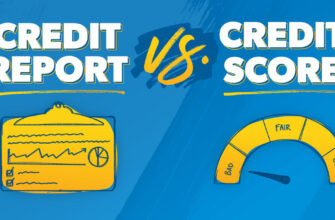Debt Consolidation: Strategies for Combining and Managing Multiple Debts
Debt can be a significant burden on individuals and families, affecting their financial stability and overall well-being. When faced with multiple debts, finding effective strategies to manage and reduce them becomes crucial. Debt consolidation is a popular approach that aims to simplify the repayment process by combining multiple debts into a single loan or payment plan. In this article, we will explore the benefits and risks of debt consolidation, various methods and techniques for consolidating debts, and effective strategies for managing debt.
Debt Consolidation: Benefits and Risks
Debt consolidation offers several potential benefits, but it’s important to consider the associated risks as well. Let’s delve into both aspects:
1.1 Benefits of Debt Consolidation
a) Simplified Repayment: Combining multiple debts into a single payment can simplify your financial life. Instead of managing various due dates and payment amounts, you only need to focus on one payment each month.
b) Lower Interest Rates: Debt consolidation often involves obtaining a new loan or credit line with a lower interest rate than your existing debts. This can help reduce the overall cost of borrowing and potentially save money in the long run.
c) Improved Cash Flow: Consolidating your debts may lead to lower monthly payments, freeing up cash flow for other essential expenses or savings. This can provide some breathing room and relieve financial stress.

1.2 Risks of Debt Consolidation
a) Extended Repayment Period: While lower monthly payments can be advantageous, extending the repayment period may result in paying more interest over time. It is crucial to carefully consider the trade-off between lower payments and longer repayment duration.
b) Collateral Requirement: Some debt consolidation methods, such as secured loans or home equity lines of credit, may require collateral. This means that if you fail to repay the loan, you could risk losing your assets.
c) Potential for Accumulating More Debt: Consolidating debts can create a false sense of financial relief, leading some individuals to accumulate new debts alongside the consolidated loan. It is essential to exercise discipline and avoid taking on additional financial obligations.
Debt Consolidation Methods and Techniques
There are several debt consolidation methods and techniques available, each with its own advantages and considerations. Let’s explore some common approaches:
2.1 Debt Consolidation Loans
A debt consolidation loan involves borrowing a new loan to pay off existing debts. The new loan typically has a lower interest rate, allowing you to simplify payments and potentially save money. Personal loans, balance transfer credit cards, or home equity loans are common options for debt consolidation loans.
2.2 Debt Management Plans
Debt management plans (DMPs) are arrangements made through credit counseling agencies. These plans involve negotiating with creditors to reduce interest rates or waive fees. With a DMP, you make a single monthly payment to the credit counseling agency, who then distributes the funds to your creditors.
2.3 Home Equity Loans or Lines of Credit
Homeowners may consider using the equity in their property to consolidate debts. With a home equity loan or line of credit, you borrow against the value of your home. This method typically offers lower interest rates but carries the risk of losing your home if you default on the loan.
2.4 Debt Consolidation through Peer-to-Peer Lending
Peer-to-peer lending platforms connect borrowers with individual investors willing to lend money. These platforms often provide loans with competitive interest rates, making them an alternative for debt consolidation.

Effective Debt Management Strategies
In addition to debt consolidation, implementing effective debt management strategies can help individuals regain control over their finances. Consider the following approaches:
3.1 Budgeting and Financial Planning
Creating a budget and sticking to it is crucial for managing debt. Track your income, expenses, and debt payments to gain a clear understanding of your financial situation. Make adjustments to your spending habits and prioritize debt repayment within your budget.
3.2 Snowball or Avalanche Method
The snowball and avalanche methods are popular debt repayment strategies. With the snowball method, you start by paying off the smallest debt first while making minimum payments on other debts. As you eliminate smaller debts, you gain momentum and tackle larger debts. The avalanche method focuses on paying off debts with the highest interest rates first, potentially saving more on interest charges.
3.3 Seek Professional Assistance
If you find it challenging to manage your debts independently, consider consulting a financial advisor or credit counselor. These professionals can provide guidance tailored to your specific situation, helping you develop a personalized debt management plan.
Conclusion
Debt consolidation offers benefits such as simplified repayment, potential interest savings, and improved cash flow. However, it’s important to be aware of the risks involved, such as extended repayment periods and the potential for accumulating more debt. Exploring various debt consolidation methods, such as loans, management plans, or home equity options, can help you find the best fit for your circumstances. Additionally, incorporating effective debt management strategies, including budgeting and repayment methods, can contribute to your long-term financial well-being. Remember, managing debt requires commitment, discipline, and a proactive approach to regain control of your financial future.








